How to correctly identify the trend
Dave Floyd is a professional FX and stock trader based in Bend, OR and the President of Aspen Trading Group. Dave’s approach to FX combines technical and fundamental analysis that results in trades that fall into the swing trading time frame of several hours to several days. For a free trial to
Dave Floyd’s Daily Forex Alerts
or call 888.484.8220 ext. 1.
This is the first article in a series of trading lessons. I hope you enjoy
them and find them beneficial to your own trading.
Click here to order your copy of The VXX Trend Following Strategy today and be one of the very first traders to utilize these unique strategies. This guidebook will make you a better, more powerful trader.
If there is one piece of the trading puzzle that remains a bit unclear for
traders it is that of the “trend”. Depending on whom you speak to, each will
have a different answer. Regardless, of their answer however, it is critical
that you arrive at the correct answer in the context of how that person trades.
Failure to correctly identify the trend will greatly reduce the odds of success.
The first place to start is by identifying which time frame you plan to make your
trade off of. For me, I only have three choices, 60-minute, 240-minute or the
daily chart, as these are the only three time frames I follow for trade set-ups.
The vast majority of the trades are based on the 60-minute chart however. So,
for the time being, let’s keep it simple, I will not factor in the other time
frames as it can get a bit confusing.
What is the trend on the following chart?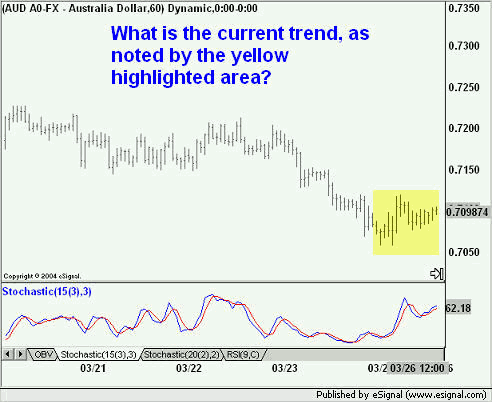
In all fairness, it is a bit of a trick question. The answer, based on my
approach, is that there is simply not enough information to make that call.
Sure, the last several bars have been moving up, but overall prices are still
trending lower.
Let’s add one more piece of information to the chart.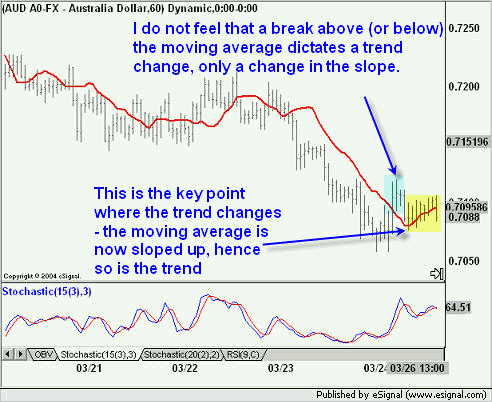
By adding a moving average, one can much better analyze the “current” trend. Remember, I am not terribly
interested about what happened several hours ago, but I am interested in what has happened in the last 4-6 hours.
Without the moving average, it is nearly impossible to correctly identify what the current trend is.
Let’s look at another example.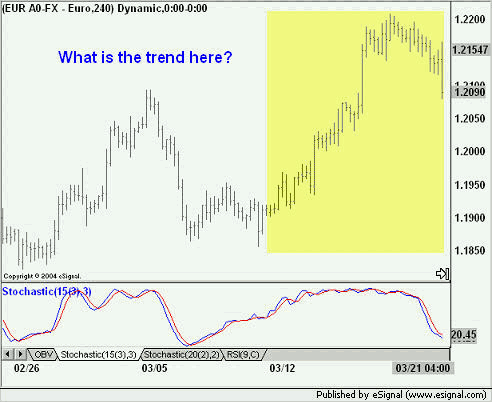
I suspect there were some readers who said; “The trend is up, I will look to buy
into this pull-back.” But again, there is simply not enough information to draw
that conclusion presently. Let’s add in the moving average.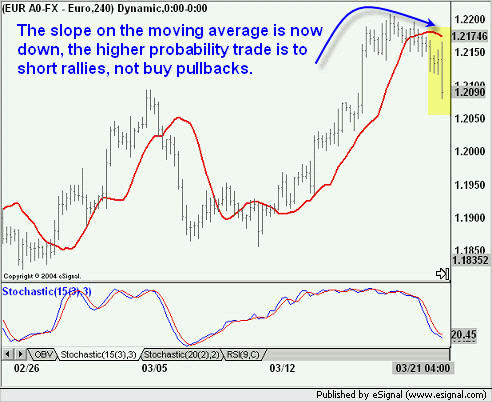
If you did not correctly identify the trend, many will succumb to buying the
pullback into support, or in this case fib support for this losing trade could
easily have been avoided if you correctly identified the trend.
Needless to say, this trade would have flamed out badly.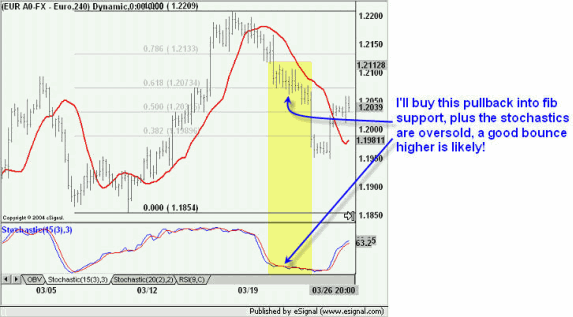
Later this week I will go into more detail about correct trend definition as
well as factoring in other time frames in order to refine your definition of the
trend.
As always, feel free to send me your comments and questions.
Dave
Aspen Trading Group
www.aspentrading.com
